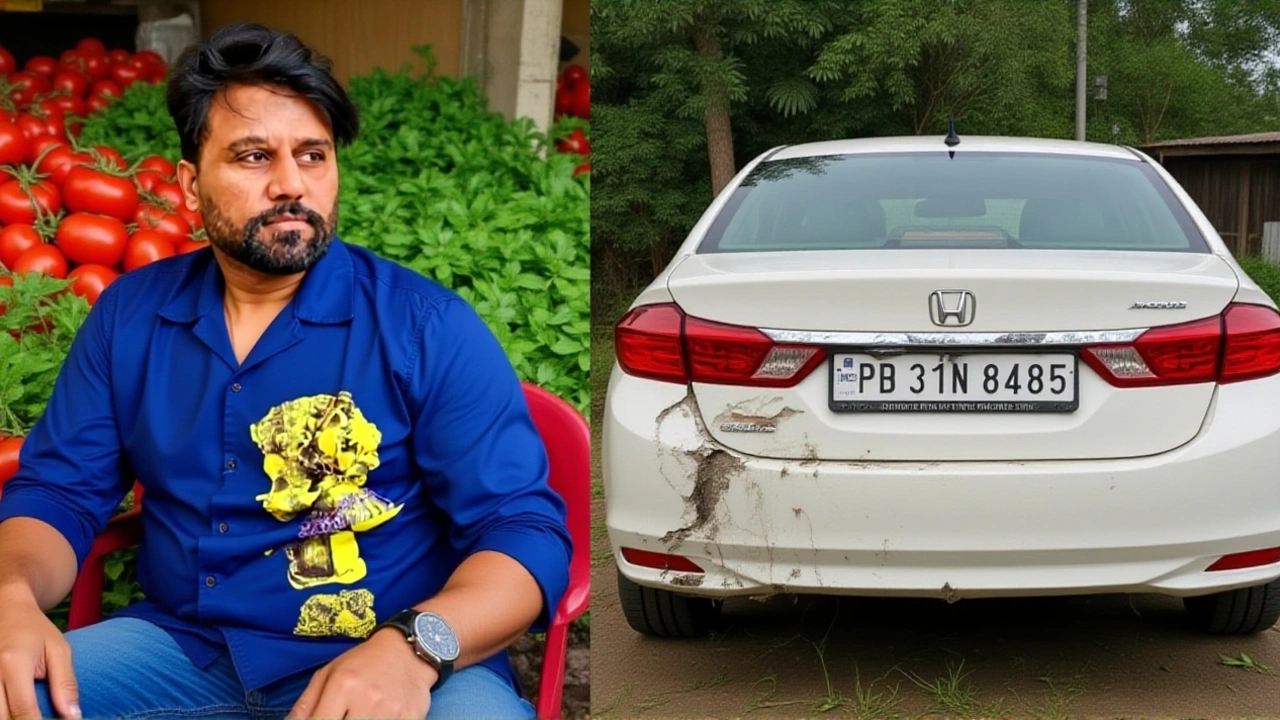Harman Sidhu, the beloved Punjabi singer whose voice filled homes across the diaspora with songs like Paper Te Payar, died instantly on Friday night, November 22, 2025, after his car slammed head-on into a canter truck on the Mansa–Patiala road in Punjab’s Mansa district. He was 36 or 37 — sources differ — and was returning to his ancestral village of Khiala Kalan after a day of work. The collision left his vehicle completely mangled. Police confirmed he died on the spot. His body was taken to Mansa Civil Hospital for a post-mortem. The truck driver has been detained, and a case has been registered. The accident sent shockwaves through the Punjabi music world — not just because of his talent, but because of the quiet humanity he carried with him.
A Voice That Belonged to Everyone
Harman Sidhu didn’t just sing; he spoke to people. Born in Khiala Kalan, a small village in Mansa district, he never lost the rural cadence in his voice or the humility in his demeanor. His breakout hit, Paper Te Payar, a 2007 duet with singer Miss Pooja, became an anthem for young lovers across Punjab and beyond. It wasn’t just the melody — it was the rawness in his delivery, the way he made heartbreak sound familiar. By 2009, his album Ladia cemented his place in Punjabi pop, with tracks like Mela, Sari Raat Parhdi, and Thakevan Jattan Da dominating radio playlists and wedding playlists alike.He wasn’t a flashy star. No luxury cars in his Instagram stories. No staged drama. Just him, his guitar, his family, and the soil he came from. Gulf News called him a singer whose voice had become a staple in Punjabi households. India Today noted his "simplicity earned him considerable recognition locally." And that’s what made his death feel so personal to so many.
The Last Reel
Just weeks before the crash, Sidhu posted a video on Instagram — a quiet moment on what looked like a terrace, holding marigold flowers beside his young daughter. She giggled as he spun her around. The caption? Nothing. Just love. Fans flooded the comments with heart emojis and "Rest in peace" messages, unaware they were mourning someone still alive. Another post showed her dancing in socks, barefoot on a wooden floor, laughing as he clapped from behind the camera. That was Harman: present. Grounded. Real.His wife and daughter are now left to navigate a world without him. Hindustan Times confirmed he was survived by them. There’s no public statement yet from his family, but the silence speaks volumes. In Punjabi culture, grief is often carried quietly — through prayer, through songs, through the way a mother hums an old tune to her child at bedtime.

The Road That Took Him
The accident occurred on the Mansa–Patiala road, a vital regional highway connecting two of Punjab’s cultural hubs. Mansa, with a population of roughly 765,000 as per the 2011 Census, is a district known more for its farming and folk music than its road safety. The stretch where the crash happened — near a local palace — is notorious for poor lighting and speeding trucks. Many locals say it’s a corridor of risk, not a route of comfort.According to police, the truck driver was operating the vehicle at the time of impact. No official cause has been released — no mention of alcohol, fatigue, or mechanical failure. But the fact that Sidhu’s car was traveling from Mansa to Khiala Kalan — a short, familiar drive — makes the tragedy even more jarring. He knew this road. He’d driven it hundreds of times. Why this night? Why now?
The Industry in Mourning
Within hours of the news breaking, tributes poured in. Fellow singers posted black-and-white photos with captions like "Our voice is gone" and "You sang our stories." One artist recalled sharing a meal with Sidhu at a roadside dhaba just last month. "He ordered chai, asked about my kids, and didn’t talk about music once," they wrote.The Punjabi music industry, often criticized for its commercialism, paused. No new releases. No promotions. Just silence — and a flood of old videos. On YouTube, views of Paper Te Payar surged past 10 million in 48 hours. A fan-created playlist titled "Harman’s Heart" now has over 500 songs and has been shared more than 200,000 times.
What’s clear is this: Harman Sidhu wasn’t just an artist. He was a bridge — between village and city, between generations, between grief and memory. His music didn’t need big budgets. It needed honesty. And he gave it.

What Comes Next?
The investigation remains open. Authorities are reviewing CCTV footage from nearby shops and the truck’s black box data. Standard procedure in India suggests charges may be filed within weeks if negligence is proven — but justice, in these cases, rarely brings back the lost.His daughter, now without a father, will one day hear his songs. Maybe she’ll play them on her phone. Maybe she’ll dance to them, just like she did on that terrace. And maybe, in that moment, she’ll feel him — not as a celebrity, but as a man who loved her, who loved his roots, who loved singing to the world without ever asking for anything in return.
Frequently Asked Questions
How did Harman Sidhu rise to fame?
Harman Sidhu rose to fame in 2007 with the duet "Paper Te Payar" alongside singer Miss Pooja. The song’s emotional lyrics and his raw, unpolished vocal style resonated deeply with Punjabi audiences, quickly becoming a wedding and radio staple. His follow-up album "Ladia" in 2009, featuring hits like "Mela" and "Sari Raat Parhdi," solidified his status as a leading voice in Punjabi pop music.
What was Harman Sidhu’s connection to Khiala Kalan?
Khiala Kalan, a village in Mansa district, Punjab, was Harman Sidhu’s birthplace and lifelong home base. Despite his fame, he rarely moved away, often returning after shows to be with family and community. His music frequently reflected rural Punjabi life, and he was known to perform at local festivals and weddings in the area — a rare trait among mainstream artists.
Why did the accident happen on the Mansa–Patiala road?
The Mansa–Patiala road is a heavily used regional highway with inconsistent lighting, narrow lanes, and frequent heavy truck traffic. Locals have long raised concerns about safety, especially at night. While the official cause is still under investigation, similar accidents on this stretch have occurred before, often involving passenger vehicles colliding with slower-moving trucks.
How has the Punjabi music industry responded to his death?
Artists, producers, and fans have flooded social media with tributes, with many calling his death an "unimaginable loss." Several musicians canceled upcoming shows as a mark of respect. YouTube streams of his songs spiked dramatically, and fan-made playlists now total over 500 tracks. The industry, often seen as transactional, showed rare unity — acknowledging Sidhu’s authenticity as something irreplaceable.
What impact will his death have on his daughter’s future?
While no public plans have been announced, Sidhu’s legacy is already being preserved through his music and social media archives. His daughter, who was often featured in his posts, may one day be introduced to his work as part of her cultural identity. Many in Punjab hope his story will inspire efforts to improve road safety in rural areas — turning grief into change.
Was Harman Sidhu working at the time of the accident?
Yes. According to Gulf News, Sidhu was returning home from a shoot when the accident occurred. He had been active professionally in the weeks leading up to his death, appearing in music videos and live performances. His last Instagram post, shared just weeks before, showed him with his daughter — a reminder that he was not just an artist, but a devoted father.
